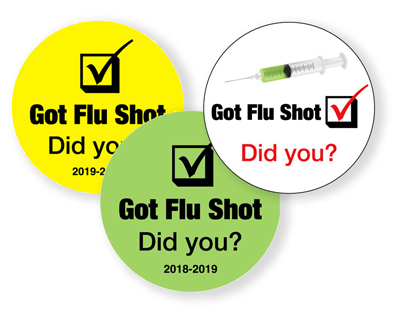The fact is, people tend to stay indoors in cold weather, especially during frostbite warnings. But, when you spend more time in an enclosed space with others it increases the likelihood of transmitting viruses like the flu. Plus, dry indoor air amplifies the problem because it can make people more susceptible to these infections.
So, can states like Florida, Arizona and Oregon, that experienced normal temperatures in late January, expect fewer flu outbreaks?
Unfortunately, since it’s not just bitter cold that accelerates the spread of a virus, the answer is no. For example, humidity causes virus droplets to stay in the air longer and that means they have more time to infect people. Furthermore, a recent study found flu epidemics are more likely to occur in small cities than large, regardless of the weather conditions.
Hot or cold, humid or dry, small or large, a recent CDC report confirms that flu season is here.
And, the best remedy for spreading the flu virus remains prevention. Here’s how you can encourage your visitors, staff and patients to stay flu-free.
Good Peer Pressure
What's the top item on the list of flu prevention tips?
Drum roll...
The flu shot.
In fact, it’s no surprise that vaccines are number one in flu prevention. Even though flu outbreaks typically peak in January and February, the CDC recommends vaccinations continue throughout flu season.
But, do you leverage the power of persuasion? A “Got Flu Shot” sticker after a vaccination impacts the behavior of that person’s social group. In fact, it makes it more likely that some within that group will get a flu shot that otherwise wouldn't have gotten one.
The Psychology Of Infection Prevention
Hand washing is another key element of flu prevention. But how do you maximize compliance? A study conducted by Adam Grant, a psychological scientist at The Wharton School, University of Pennsylvania, uncovered helpful data when it comes to infection prevention.
For medical professionals, keeping patients safe is a much stronger infection prevention motivation than keeping themselves safe.
Signage that reinforces the patient connection increases handwashing compliance.
The Germ Magnets
However, signs in washrooms and bathrooms that encourage proper hand hygiene can actually become germ magnets. Using a synthetic material with a repositionable adhesive allows you to clean the sign, remove it, clean around it and then reapply.
Lastly, hand hygiene communications aren’t exclusively intended for healthcare professionals. Visitors, patients and non-medical staff are influenced by these messages as well.
United Ad Label stocks a complete line of Hand Hygiene and Infection Prevention products. In addition, the Custom Label Designer allows you to easily develop custom branded messages, cost-effectively and with fast deliveries. Click here to learn more.

